Содержание книги Biological and Bioorganic Chemistry: in 2 books. Book 1. Bioorganic Chemistry: textbook / B.S. Zimenkovsky, V.А. Muzychenko, I.V. Nizhenkovska, G.О. Syrova. — 3rd edition
Abbreviations
Preface
Introduction.The Subject, History of Bioorganic Chemistry Development, its Value as a Science
PART І. THEORETICAL BASIS OF ORGANIC AND BIOORGANIC CHEMISTRY. THE STRUCTURE OF ORGANIC AND BIOORGANIC COMPOUNDS
Сhapter 1. Classification and Nomenclature of Organic Compounds
1.1. Classification of Organic Compounds
1.1.1. Classification Based on the Carbon Chain Structure
1.1.2. Classification Based on the Nature of the Functional Group
1.2. Nomenclature of Organic Compounds
Сhapter 2. The Structure of Organic Compounds
2.1. Representation of the Structure of Organic Compounds
2.2. Isomerism of Organic Compounds
2.2.1. Structural Isomerism
2.2.2. Stereoisomerism
Сhapter 3. Electronic Conceptions in Organic Chemistry
3.1. Chemical Bonds in Bioorganic Molecules
3.1.1. The Structure of Covalent Bonds
3.1.2. Сharacteristics of Covalent Bonds
3.2. Electronic Effects, the Mutual Effect of Atoms in Molecules
3.2.1. The Inductive Effect
3.2.2. The Mesomeric Effect
3.3. Classification of Chemical Reactions and Reagents. the Mechanism of Chemical Reactions
3.3.1. Classification of Chemical Reactions Based on Their Mechanisms
3.3.2. Classification of Chemical Reactions Based on the Bond Cleavage
3.3.3. The Mechanisms of Chemical Reactions
3.4. The Acid and Base Properties of Organic Compounds
3.4.1. The Theory of Bronsted
3.4.2. The Theory of Lewis
PART ІI. HYDROCARBONS AND THEIR DERIVATIVES
Сhapter 4. Acyclic Hydrocarbons
4.1. Alkanes
4.1.1. The Structure, Homology, Nomenclature, and Isomerism
4.1.2. Chemical Properties
4.1.3. Industrial and Biomedical Significance
4.2. Alkenes
4.2.1. The Structure, Nomenclature and Isomerism
4.2.2. Chemical Properties
4.3. Alkynes
4.4. Alkadienes
Сhapter 5. Carbocyclic Hydrocarbons
5.1. Alicyclic Hydrocarbons
5.1.1. Classification and Nomenclature
5.1.2. Chemical Properties
5.1.3. Biomedical Significance
5.2. Arenes
5.2.1. Classification, Aromaticity
5.2.2. Nomenclature and Isomerism of Mononuclear Arenes
5.2.3. Chemical Properties of Mononuclear Arenes
5.2.4. Polynuclear Arenes
Сhapter 6. Halogen Derivatives of Hydrocarbons
6.1. Chemical Properties
6.1.1. Reactions of Nucleophilic Substitution
6.1.2. Reactions of Elimination
6.2. Biomedical Significance
Сhapter 7. Hydroxyl Derivatives of Nydrocarbons. Thiols
7.1. Monoatomic Alcohols
7.1.1. Structure, Nomenclature and Isomerism
7.1.2. Chemical Properties
7.1.3. Individual Representatives
7.2. DI- and Polyatomic Alcohols
7.2.1. Structure, Nomenclature and Isomerism
7.2.2. Chemical Properties
7.2.3. Individual Representatives
7.3. Thiols and Thio Ethers
7.3.1. Structure and Nomenclature
7.3.2. Chemical Properties
7.4. Phenols
7.4.1. Structure, Classification and Nomenclature
7.4.2. Chemical Properties
7.4.3. Medical Application
8.1. Classification and Nomenclature
8.2. Chemical Properties
8.3. Biological Activity and Toxicity
Сhapter 9. Biologically Important Carbonyl Compounds
9.1. Structure and Nomenclature
9.2. Chemical Properties
9.2.1. Oxidation and Reduction Reactions
9.2.2. Reactions of Nucleophilic Addition
9.2.3. Reactions of the Addition-Elimination
9.2.4. Condensation Reactions
9.2.5. α-Carbon Atom Reactions
9.2.6. Polymerization Reactions
9.3. Biomedical Significance
Сhapter 10. Carboxylic Acids and Their Functional Derivatives
10.1. Aliphatic and Aromatic Monocarboxylic Acids
10.1.1. Nomenclature
10.1.2. Chemical Properties
10.2. Carbonic Acid Derivatives
10.3. Aliphatic and Aromatic Dicarboxylic Acids
10.3.1. Classification and Nomenclature
10.3.2. Chemical Properties
Сhapter 11. Biologically Important Heterofunctional Compounds
11.1. Hydroxy Derivatives of Amines
11.1.1. Amino Alcohols
11.1.2. Aminophenols
11.2. Hydroxy Acids
11.2.1. Aliphatic Hydroxy Acids
11.2.2. Aromatic Hydroxy Acids
11.3. Oxoacids
11.3.1. Some Representatives of Oxoacids
11.3.2. Biosynthesis of Higher Fatty Acids
11.4. Amino Acids
11.4.1. Structure of Amino Acids
11.4.2. Nomenclature and Isomerism of Amino Acids
11.4.3. Chemical Properties
11.5. Derivatives of Para-Amino Benzoic and Sulfanilic Acids
PART ІII. BIOLOGICALLY ACTIVE HETEROCYCLIC COMPOUNDS
Сhapter 12. Three-, Four- and Five-Membered Heterocyclic Compounds
12.1. Three- and Four-Membered Heterocyclic Compounds
12.2. Five-Membered Heterocycles Containing One Heteroatom
12.2.1. Chemical Properties
12.2.2. Some Representatives Having Biomedical Significance
12.3. Five-Membered Heterocycles Containing Two Heteroatoms
12.3.1. Oxazole and Isooxazole
12.3.2. Thiazole
12.3.3. Pyrazole
12.3.4. The Most Important Derivatives of Pyrazole
12.3.5. Imidazole
12.3.6. The Most Important Derivatives of Imidazole
Сhapter 13. Six- and Seven-Membered Heterocyclic Compounds
13.1. Six-Membered Heterocycles Containing One Heteroatom
13.1.1. Six-Membered Heterocycles With Nitrogen Heteroatom
13.1.2. Six-Membered Heterocycles With Oxygen Heteroatom
13.2. Six-Membered Heterocycles Containing Two Heteroatoms
13.2.1. Six-Membered Heterocycles With Two Nitrogen Heteroatoms
13.2.2. Six-Membered Heterocycles With Nitrogen and Sulfur Heteroatoms
13.3. Seven-Membered Heterocycles
Сhapter 14. Biologically Important Condensed Heterocyclic Systems, Alkaloids
14.1. Purine Derivatives
14.1.1. Hydroxy Derivatives of Purine
14.1.2. Amino Derivatives of Purine
14.2. Pteridine Derivatives
14.3. Alkaloids
14.3.3. Pyridine and Piperidine Alkaloids
14.3.2. Quinoline Alkaloids
14.3.3. Isoquinoline and Phenanthrene Isoquinoline Alkaloids
14.3.4. Tropane Alkaloids
PART ІV. BIOPOLYMERS AND BIOREGULATORS
Сhapter 15. Carbohydrates or Saccharides (Sugars)
15.1. Monosaccharides (Monoses)
15.1.1. Isomerism
15.1.2. Tautomerism
15.1.3. Chemical Properties
15.1.4. Individual Representatives
15.1.5. Derivatives of Monosaccharides
15.2. Disaccharides
15.2.1. Reducing Disaccharides
15.2.2. Non-Rreducing Disaccharides
15.3. Higher Polysaccharides
15.3.1. Homopolysaccharides
15.3.2. Heteropolysaccharides
Сhapter 16. Proteinogenic Amino Acids, Peptides and Proteins
16.1. Proteinogenic Amino Acids and Their Properties
16.1.1. Isomerism and Structure
16.1.2. Chemical Properties
16.2. Peptides and Proteins
16.2.1. Amino Acid Composition and Amino Acid Sequence
16.2.2. Structural Organization of Proteins
16.2.3. Electrophoresis of Amino Acids and Proteins
16.2.4. Classification of Proteins
16.2.5. Qualitative Reactions on Proteins
Сhapter 17. Nucleic Acids. Coenzymes
17.1. Nucleosides
17.2. Nucleotides
17.3. The Structure of Nucleic Acids
17.3.1. The Primary Structure
17.3.2. The Secondary Structure of DNA
17.3.3. The Structure and Functions of RNA
17.4. Nucleotide Coenzymes
18.1. Saponifiable Lipids
18.1.1. Simple Saponifiable Lipids
18.1.2. Complex Saponifiable Lipids
18.2. Nonsaponifiable Lipids
18.2.1. Terpenes
18.2.2. Carotenoids
18.2.3. Steroids
18.2.4. Prostaglandins
Answer on the Test for Self Control
Recommended Literature List
Index

 01054, г. Киев, ул.
01054, г. Киев, ул.


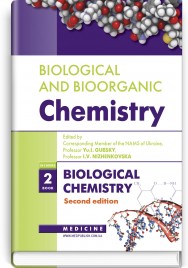
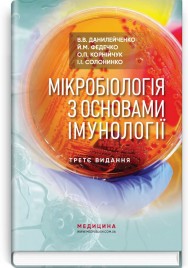
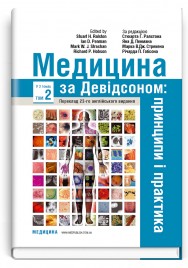

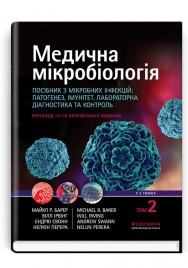
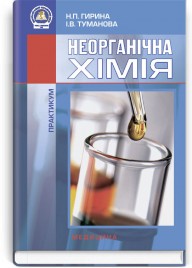
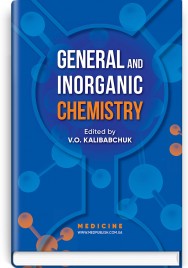
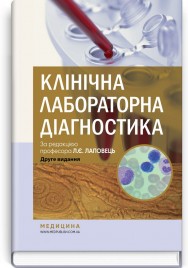
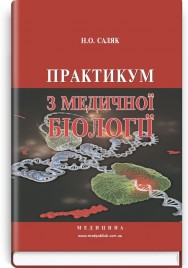
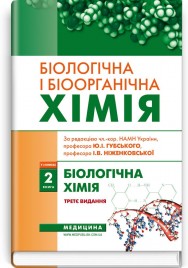




 Архив содержит книги, которых нет в наличии, но которые в ближайшее время, возможно,
Архив содержит книги, которых нет в наличии, но которые в ближайшее время, возможно,